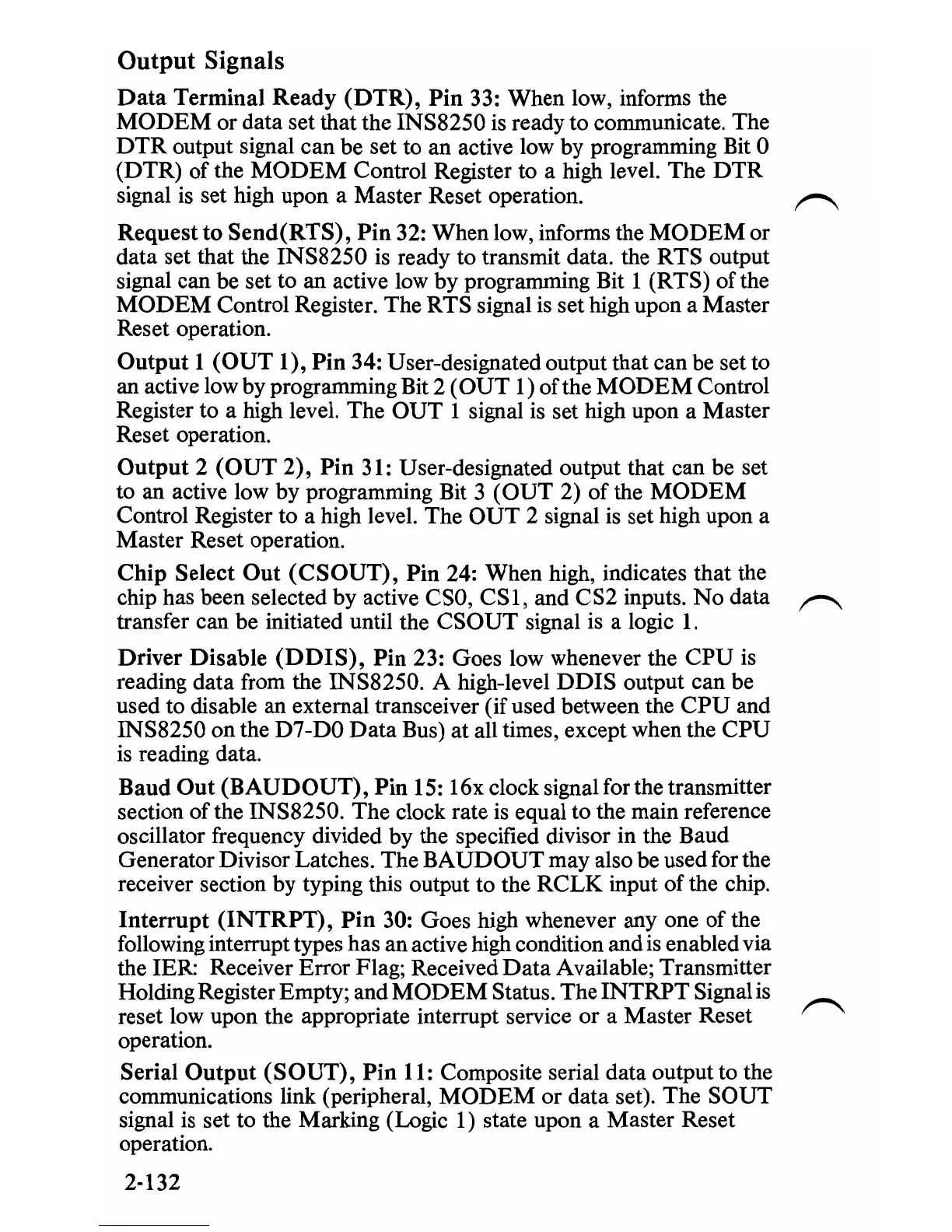Output Signals
Data
Terminal
Ready
(DTR),
Pin
33: When low, informs the
MODEM
or data set that the INS8250 is ready to communicate. The
DTR
output signal can be set to an active low by programming Bit 0
(DTR) of the
MODEM
Control Register to a high level. The
DTR
signal
is
set high upon a Master Reset operation.
Request
to
Send(RTS),
Pin
32: When low, informs the
MODEM
or
data set that the
INS8250
is
ready to transmit data. the RTS output
signal can be set to an active low by programming Bit 1 (RTS) of the
MODEM
Control Register. The RTS signal
is
set high upon a Master
Reset operation.
Output
1
(OUT
1),
Pin
34: User-designated output that can be set to
an active low by programming Bit 2
(OUT
1)
of
the
MODEM
Control
Register to a high level. The
OUT
1 signal
is
set high upon a Master
Reset operation.
Output
2
(OUT
2),
Pin
31: User-designated output that can be set
to an active low by programming Bit 3
(OUT
2) of the
MODEM
Control Register to a high level. The
OUT
2 signal is set high upon a
Master Reset operation.
Chip
Select
Out
(CSOUT),
Pin
24: When high, indicates that the
chip has been selected by active
CSO,
CSl,
and
CS2
inputs.
No
data
transfer can be initiated until the
CSOUT
signal
is
a logic
1.
Driver
Disable
(DDIS),
Pin
23: Goes low whenever the
CPU
is
reading data from the INS8250. A high-level
DDIS
output can be
used to disable an external transceiver (if used between the
CPU
and
INS8250 on the D7-DO
Data
Bus) at all times, except when the
CPU
is
reading data.
Baud
Out
(BAUDOUT),
Pin
15: 16x clock signal for the transmitter
section of the INS8250. The clock rate is equal to the main reference
oscillator frequency divided by the specified divisor in the Baud
Generator Divisor Latches. The
BAUDOUT
may also be used for the
receiver section by typing this output to the
RCLK
input
of
the chip.
Interrupt
(INTRPT),
Pin
30: Goes high whenever
anyone
of the
following interrupt types has an active high condition and
is
enabled via
the IER: Receiver Error Flag; Received
Data
Available; Transmitter
Holding Register Empty; and
MODEM
Status. The
INTRPT
Signal is
reset low upon the appropriate interrupt service or a Master Reset
operation.
Serial
Output
(SOUT),
Pin
11: Composite serial data output to the
communications link (peripheral,
MODEM
or data set). The
SOUT
signal
is
set to the Marking (Logic
1)
state upon a Master Reset
operation.
2-132
